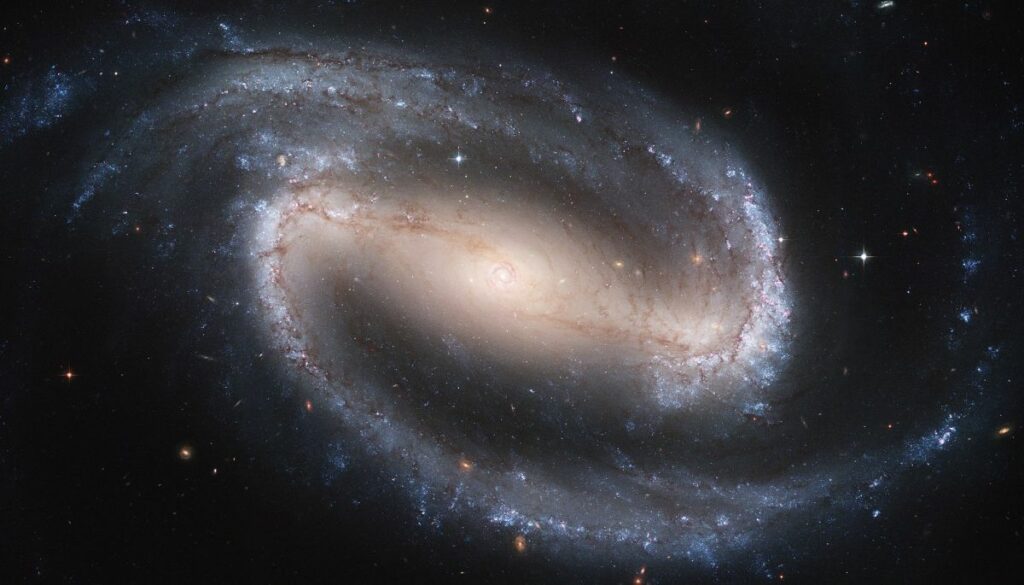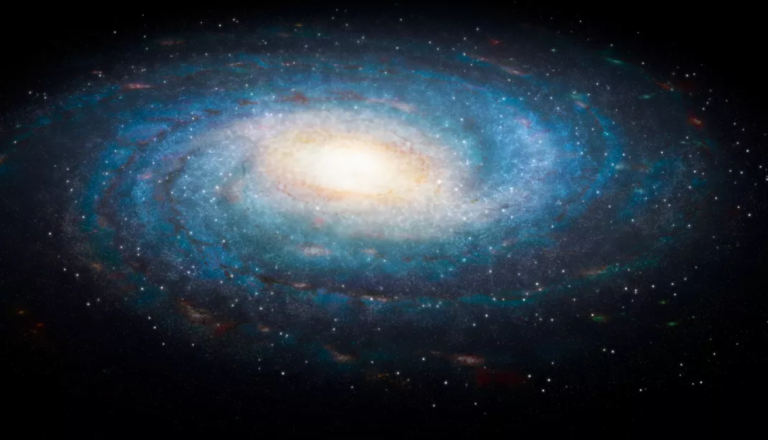New Findings Suggest the Milky Way Galaxy Might Have a Shape Different from Previous Assumption
The Galactic Shape Provides Clues to a History of Collisions with Other Galaxies or Galactic Clusters.
New measurements suggest that the Milky Way galaxy may have a different shape than we thought.
Over the past few years, astronomers have increasingly discovered that galaxies seem to come in three main shapes: Elliptical, irregular and spiral. The majority of known galaxies that fit in this last category seem to have two prominent “arms” that branch out and split into lesser arms.
But the traditional portrayal of the Milky Way is that of a galaxy with four major spiral arms extending out from a thick centralized bulge of stars. This makes our spiral galaxy stand out as an extremely rare outlier with an odd shape that must have some very unique properties to grant it four major arms.
That portrayal could be wrong, however. A team of astronomers has published new research that suggests we have been wrong about the shape of the Milky Way for decades, with our galaxy instead having two main arms just like its contemporary spiral galaxies.
The discovery that has the potential to reshape our comprehension of the Milky Way unfolded as a result of the analysis conducted by space scientists affiliated with the Chinese Academy of Sciences at the Purple Mountain and National Astronomical Observatories. Through an examination of diverse astronomical data sources, their objective was to enhance our understanding of the true shape of our galaxy.
“In spite of extensive research, there remains some uncertainty regarding the overall spiral structure morphology of the Milky Way,” stated the astronomers in their research paper, outlining their investigation and findings. “Accurate distance measurements over the past two decades have presented us with an opportunity to address this issue.”
The team scrutinized data obtained from advanced space instruments of a new generation that enable more precise measurement of distances to individual stars. This facilitated the determination of distances to approximately 200 stars, laying the foundation for constructing a map of the Milky Way. Additionally, they incorporated data from the Gaia space telescope, operated by the European Space Agency (ESA), renowned for its precise observations of stellar movement and their positions relative to Earth.
Particularly, the astronomers focused on analyzing Gaia’s data pertaining to hot and massive stars known as OB stars. These stars, with their relatively short lifespans, exhibit minimal motion during their hydrogen-burning main sequence, rendering them valuable for the purpose of mapping. The map incorporated data from 24,000 OB stars, along with Gaia’s observations of over 1,000 open galactic clusters.
As a result of their comprehensive analysis, the astronomers proposed that the Milky Way takes the form of a barred spiral galaxy, featuring a dense central bar from which two primary arms extend.

“Using the precise locations of very young objects, for the first time, we propose that our galaxy has a multiple-arm morphology that consists of two-arm symmetry,” they wrote. “The Norma and Perseus Arms are likely the two symmetric arms in the inner Milky Way. As they extend from the inner galaxy to the outer parts, they bifurcate, and connect to the Centaurus and Sagittarius Arms, respectively.”
At the outskirts of the Milky Way, the astronomers write, are distant and fragmented irregular arms that are not connected to the central bulge of the galaxy where the majority of its stars are located. The fragmentation of spiral arms may have been caused by our galaxy colliding with other galaxies or even galactic clusters in its ancient history.
The team of astronomers reached the conclusion that this novel depiction of the Milky Way’s shape holds the potential to serve as an alternative foundation for forthcoming investigations into galactic structure. They further emphasize that additional observations of nearby radio sources, carried out by multiple telescopes to enable distance calculations, as well as enhanced data from the Gaia spacecraft, will likely unveil more intricate details. The Gaia spacecraft, which embarked on its mission in 2013, is anticipated to continue its observations of the universe until at least 2025, spanning a period of two more years.
The team’s research is published in the Astrophysical Journal.
Source:SpaceCom
Do not forget to share your opinion with us to provide you with the best posts !




0 Comments